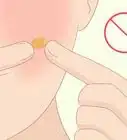This article was medically reviewed by Luba Lee, FNP-BC, MS and by wikiHow staff writer, Danielle Blinka, MA, MPA. Luba Lee, FNP-BC is a Board-Certified Family Nurse Practitioner (FNP) and educator in Tennessee with over a decade of clinical experience. Luba has certifications in Pediatric Advanced Life Support (PALS), Emergency Medicine, Advanced Cardiac Life Support (ACLS), Team Building, and Critical Care Nursing. She received her Master of Science in Nursing (MSN) from the University of Tennessee in 2006.
There are 10 references cited in this article, which can be found at the bottom of the page.
This article has been viewed 26,105 times.
Sunburns are a common, annoying side effect from spending too much time in the sun or a tanning bed. Dealing with a sunburn can be an uncomfortable experience, especially when your skin starts peeling. Fortunately, you can ease the pain and discomfort from a peeling sunburn, and your treatments may even help with the peeling. Additionally, you can help your sunburn heal faster with a little self-care. However, it’s best to see your doctor if your sunburn is widespread, blistering, or shows signs of infection.
Steps
Easing Pain, Discomfort, and Peeling
-
1Use a cool compress every 2-3 hours to help reduce pain and peeling. Run cool water over a washcloth or towel. For a cooler compress, put it in your freezer for up to 1 minute. Then, place the compress over your skin for up to 30 minutes. If the cloth becomes warm, refresh it by running cool water over it or popping it into the freezer for about 1 minute.[1]
- Don’t get your compress too cold, and avoid using ice directly on the burn, as this can damage or irritate your peeling skin.[2]
- Keeping your skin cool may help prevent or limit skin peeling. Use your cold compress every 2-3 hours throughout the day for best results.
Variation: It’s also helpful to take cool showers and baths. Until your sunburn heals, don’t get into warm or hot water.[3]
-
2Use aloe vera gel to soothe the burned skin and help with peeling. Put a dab of aloe vera gel onto your hands, then gently apply it over your sunburn. Let the aloe vera sit on top of your skin, rather than rubbing it in, which can cause irritation. The gel will seep into your skin on its own.[4]
- You can use aloe vera gel from an aloe vera plant by breaking off a leaf and collecting the gel that comes out. Alternatively, buy a container of aloe vera gel from your local drug store or online. Just check the ingredients to make sure it’s at least 90% aloe vera.
Advertisement -
3Moisturize your skin twice a day to hydrate it and prevent more peeling. Use a fragrance-free lotion, which will be less likely to irritate your skin than a highly-scented formula. Put the lotion in the palm of your hand, then apply it over your sunburn in a thin layer. Wait about 5 minutes for the lotion to dry before you put on clothes.[5]
- Sunburn dries out your skin, which can make peeling worse. Keeping your skin moist with lotion may help prevent or reduce peeling due to a sunburn.
Warning: Don’t use petroleum jelly or oil-based moisturizers to soothe your skin. These form a layer on top of your skin, so they’ll trap in the heat.
-
4Take an oatmeal bath to ease your pain and prevent itching. Run a cool bath, then add about 1 cup (85 g) of colloidal oatmeal. Get into the bath and soak for 20 minutes. Then, rinse off in cool water and pat yourself dry with a clean towel. Finally, apply aloe vera or moisturizer to hydrate your skin.[6]
- The oatmeal bath should help relieve discomfort and itching, and may reduce your peeling.
- You can find colloidal oatmeal at your local drug store or online. As an alternative, grind up regular rolled oats in a blender or food processor.
- Alternatively, you can add 1 cup (240 mL) of apple cider vinegar to a bath and soak your sunburned skin in it for up to 20 minutes. This may help balance the pH of your skin and promote healing.[7]
- You might also find 2-3 tablespoons (30-40 g) of baking soda to be a soothing addition to your bath.[8]
-
5Take an OTC NSAID to reduce your pain and inflammation. You can use over-the-counter (OTC) NSAIDs like ibuprofen (Advil, Motrin) or naproxen (Aleve) to relieve your discomfort and help you heal faster. However, check with your doctor before you take them, as they aren’t right for everyone. Also, read the label and take your medication as directed.[9]
- Don’t take more medication than the labels says is safe, even if you still have pain.
Variation: If your doctor says that NSAIDs aren’t safe for you to take, you may be able to take acetaminophen (Tylenol) for your pain instead. However, it won’t help treat your inflammation.
-
6Apply an OTC hydrocortisone cream 1-2 times daily for inflammation and pain. Read the label on your cream and make sure you follow the instructions exactly. Put a dab of hydrocortisone cream on the tip of your finger. Then, lightly apply a layer of the cream over your sunburned skin. Try not to get any of the cream on your healthy skin.[10]
- Use as little as the cream as possible because it can cause skin irritation if you use a lot.
- You can buy an OTC hydrocortisone cream at your local drug store or online.
Helping Your Skin Heal
-
1Leave your skin alone rather than picking or scratching it. Your skin is very sensitive after a sunburn, and it needs time to heal. Scratching or peeling the skin will make it worse and could increase your risk of getting an infection. Don’t try to make your skin peel faster by picking off the skin or exfoliating it. Let the skin slough away on its own.[11]
- Keep in mind that moisturizing your skin and using aloe vera will help it heal faster than trying to peel off the skin yourself. Additionally, these treatments could help your skin stop peeling altogether.
-
2Stay out of the sun or use sun protection until your sunburn heals. Don’t expose your sunburned skin to sunlight, as this can make it worse. When you must go outside, cover your skin in a fragrance-free SPF 30 sunscreen. Additionally, cover your skin with clothing and try to stay in the shade. This will protect your skin from further damage so it will heal faster.[12]
- If your sunburned skin is exposed to more sun, then it will likely take longer to heal.
-
3Drink at least 8 cups (1.9 L) of water daily to help hydrate your skin. Your skin’s hydration comes from the inside, so make sure you stay hydrated with lots of fluids. Just like applying lotion adds moisture on top of your skin, drinking lots of water will boost your skin’s moisture from within. This can help your skin heal faster.[13]
- Staying hydrated may help you prevent or limit skin peeling after a sunburn. If you start peeling anyway, it may help the process go faster.
-
4Wear loose, cotton clothing while your sunburn heals. This will prevent friction from your clothing from making the peeling worse. Additionally, loose clothing will help you feel more comfortable. Cotton is the best material because it’s lightweight and breathable.[14]
- If you can, leave your skin uncovered while you’re indoors.
-
5Leave blisters alone, but treat broken blisters with antibiotic ointment. Don’t pick or break your blisters. This can cause an infection. However, it’s normal for blisters to break on their own. When this happens, apply an antibiotic ointment and a sterile bandage with non-stick gauze. Change the bandage every 6 hours or when it comes off.[15]
- If your blisters have discolored or smelly pus, go see your doctor. This might be a sign of an infection.
Seeking Medical Care
-
1Visit your doctor for widespread sunburn, blistering, or signs of an infection. While most sunburns will heal on their own, a severe sunburn needs medical care. Your doctor can help you find relief from pain and discomfort caused by your sunburn. Plus, they can monitor you for an infection, which causes the following symptoms:[16]
- Fever
- Increased pain or tenderness
- Swelling
- Yellow pus coming from a blister
- Red streaks
Tip: If your sunburn doesn’t improve after 3-5 days of treating it at home, then it’s best to see your doctor.
-
2Get immediate care for high fever, nausea, chills, pain, and confusion. While you’re likely okay, it’s best to see a doctor because these might be signs of a more serious condition. For instance, you may develop heat stroke or dehydration after getting a bad sunburn. Similarly, it’s possible to have a severe infection, as well. It’s best to be safe and talk to your doctor immediately.[17]
- You’re not likely to have serious symptoms when you have a sunburn, so try not to worry.
-
3Ask about a prescription corticosteroid cream for severe sunburn. Your doctor may decide you need a more concentrated corticosteroid cream that’s only available by prescription. To use this cream, dab a very small amount directly onto your sunburn. Do your best not to get it onto your healthy skin, as it may cause irritation in large doses. The cream will help relieve your pain, inflammation, and itching.[18]
- Your doctor may recommend you try over-the-counter treatments first. However, they might decide you need a prescription cream if your sunburn is interfering with your daily activities or if you’ve already tried home treatments.
Variation: If your sunburn is widespread, your doctor may prescribe an oral corticosteroid, such as prednisone, to help relieve your pain, itching, and swelling.
-
4Get an antibiotic if you develop an infection. If your doctor gives you an antibiotic, take it exactly as directed. Don’t stop taking it early, even if you feel better. Your infection may return if you don’t take the entire prescription.[19]
- In most cases, you won’t take an antibiotic for a sunburn. However, your doctor may give you an antibiotic if you start to show signs of an infection.
Warnings
- If your sunburn is causing you severe discomfort, see your doctor. They can help you find the best treatment to help you feel better.⧼thumbs_response⧽
- Getting multiple sunburns can raise your risk of skin cancer, so always protect your skin with SPF 30 sunscreen and cover your skin with clothing.[21]⧼thumbs_response⧽
References
- ↑ https://www.skincancer.org/prevention/sunburn/five-ways-to-treat-a-sunburn
- ↑ https://www.nhs.uk/conditions/sunburn/
- ↑ https://www.medicalnewstoday.com/articles/322771.php
- ↑ https://www.medicalnewstoday.com/articles/322771.php
- ↑ https://www.medicalnewstoday.com/articles/322771.php
- ↑ https://www.medicalnewstoday.com/articles/321249.php
- ↑ https://www.cnn.com/2017/04/18/health/apple-cider-vinegar-uses/index.html
- ↑ https://podcasts.ufhealth.org/soothing-sunburn/
- ↑ https://www.mayoclinic.org/diseases-conditions/sunburn/diagnosis-treatment/drc-20355928
- ↑ https://www.mayoclinic.org/diseases-conditions/sunburn/diagnosis-treatment/drc-20355928
- ↑ https://www.nhs.uk/conditions/sunburn/
- ↑ https://www.nhs.uk/conditions/sunburn/
- ↑ https://www.medicalnewstoday.com/articles/322771.php
- ↑ https://blog.skincancer.org/2018/08/30/why-does-my-skin-peel-when-i-get-sunburned/
- ↑ https://www.mayoclinic.org/diseases-conditions/sunburn/diagnosis-treatment/drc-20355928
- ↑ https://www.mayoclinic.org/diseases-conditions/sunburn/symptoms-causes/syc-20355922
- ↑ https://www.mayoclinic.org/diseases-conditions/sunburn/symptoms-causes/syc-20355922
- ↑ https://www.mayoclinic.org/diseases-conditions/sunburn/expert-answers/sunburn-treatment/faq-20057815
- ↑ https://www.mayoclinic.org/diseases-conditions/sunburn/expert-answers/sunburn-treatment/faq-20057815
- ↑ https://www.medicalnewstoday.com/articles/322771.php
- ↑ https://www.skincancer.org/prevention/sunburn/five-ways-to-treat-a-sunburn







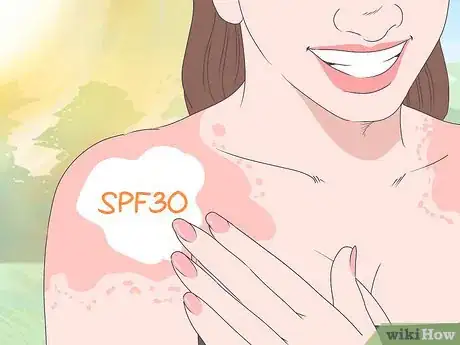




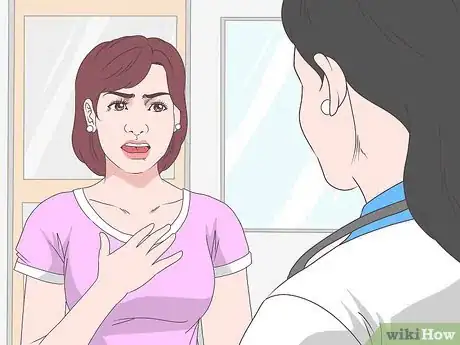
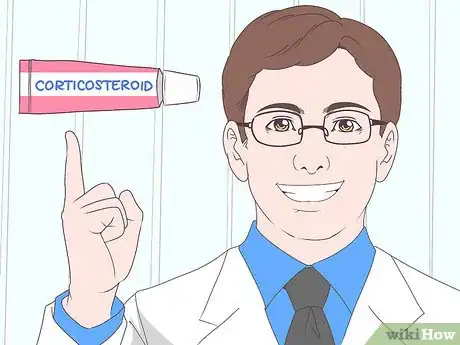
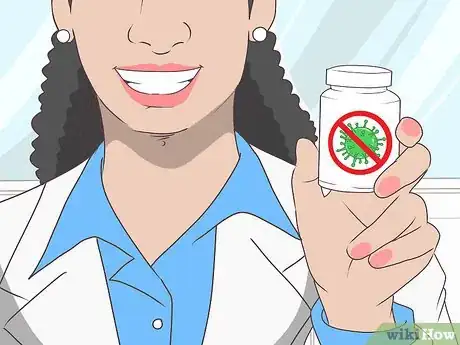
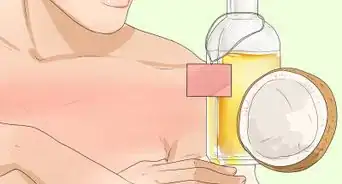
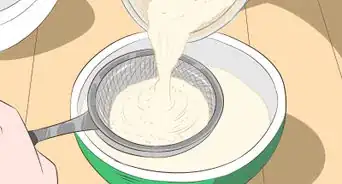
-Step-11-Version-2.webp)
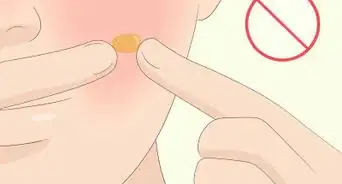
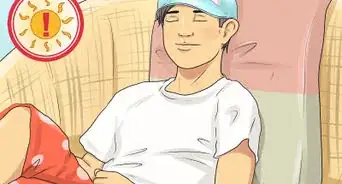

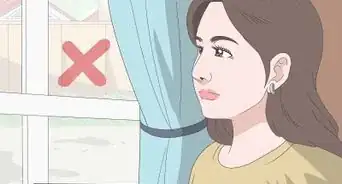
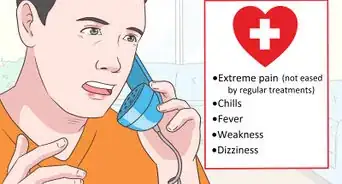

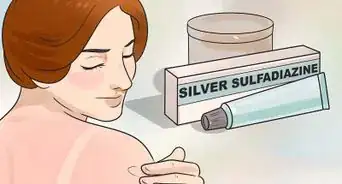
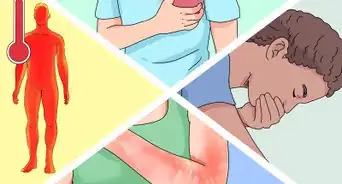
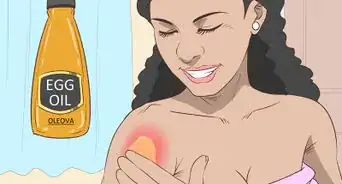
-Step-10.webp)








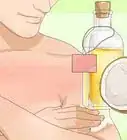
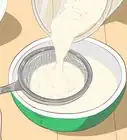
-Step-11-Version-2.webp)
